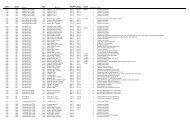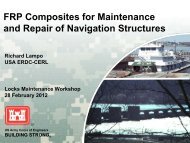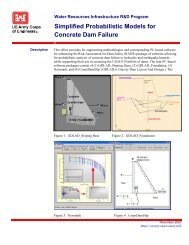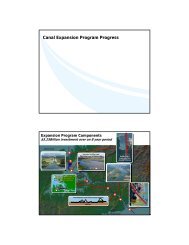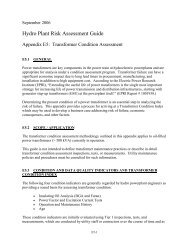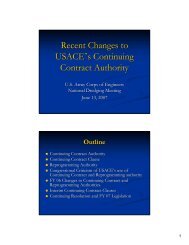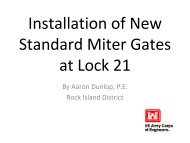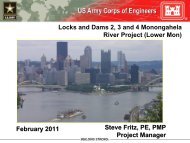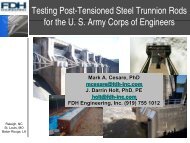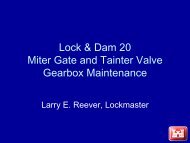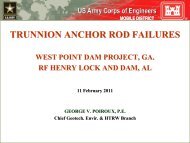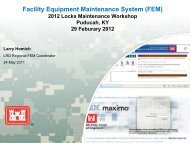Hydro Plant Risk Assessment Guide
Hydro Plant Risk Assessment Guide
Hydro Plant Risk Assessment Guide
You also want an ePaper? Increase the reach of your titles
YUMPU automatically turns print PDFs into web optimized ePapers that Google loves.
limit switches are properly set and functioning properly; hoist brakes<br />
pads have ≥ 20 and < 50% of the lining left and operate properly; some<br />
unusual noises are noted during operation; the electrical components<br />
are not very clean; the hoist system has not been tested and exercised<br />
regularly; there are multiple trouble reports on record such as repairs to<br />
the electrical controls.<br />
There are serious concerns with the condition such as: major corrosion<br />
on the critical components, wire rope corrosion or broken strands;<br />
corroded or deformed chain links; < 20% of brake pads left; significant<br />
lubricating oil contamination; unusual noises or vibrations during<br />
operation; and frequent trouble reports.<br />
0<br />
Intake Valve Operators (Hydraulic or Electric)<br />
Typical operators for emergency closure valves are:<br />
• Hydraulic Cylinders<br />
• Rotary Hydraulic<br />
• Motor-Operated Actuators<br />
Use Table 6 for evaluating the valve operator.<br />
Items to examine or note from maintenance records with regard to the intake valve operators<br />
include: availability and testing of backup power system (accumulator,<br />
engine/generator/batteries), hydraulic or motor system tested and repaired as needed, greasing<br />
system operable, retractable seals operable, closure in event of power failure, controls are<br />
updated or in excellent condition with replacement parts available, pressure differential<br />
indicators up/downstream of valve is operational, linkages in good condition, wear on stem.<br />
E11-10



